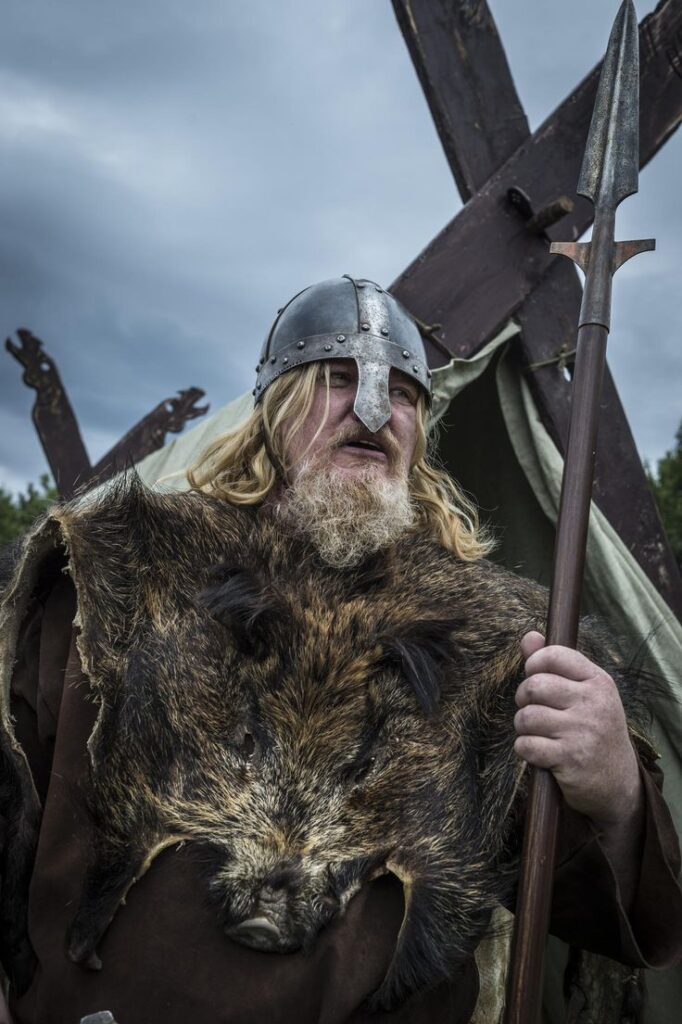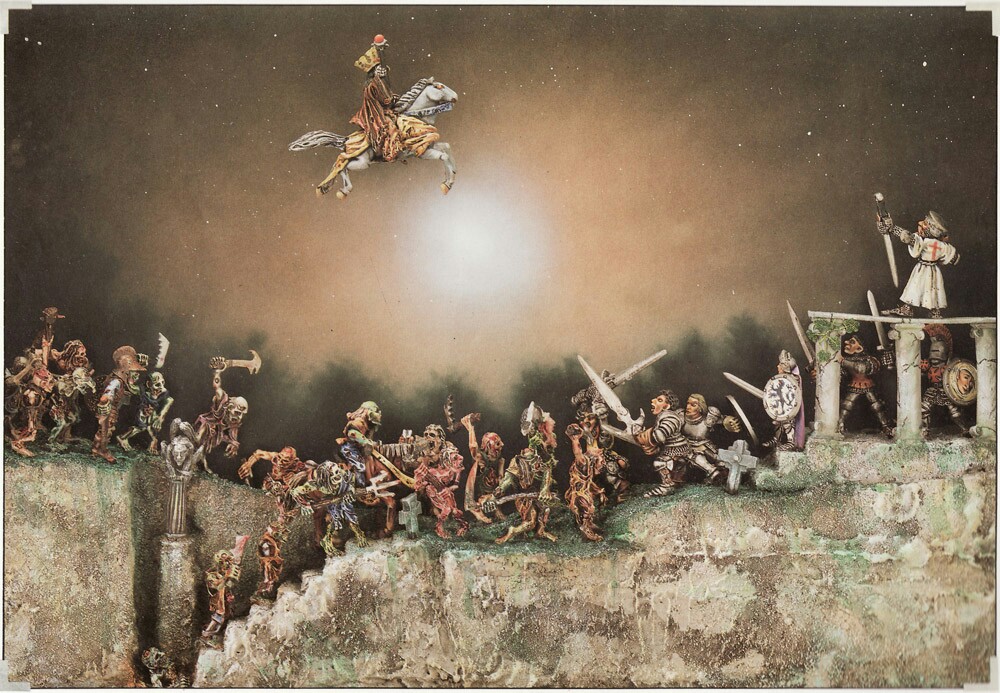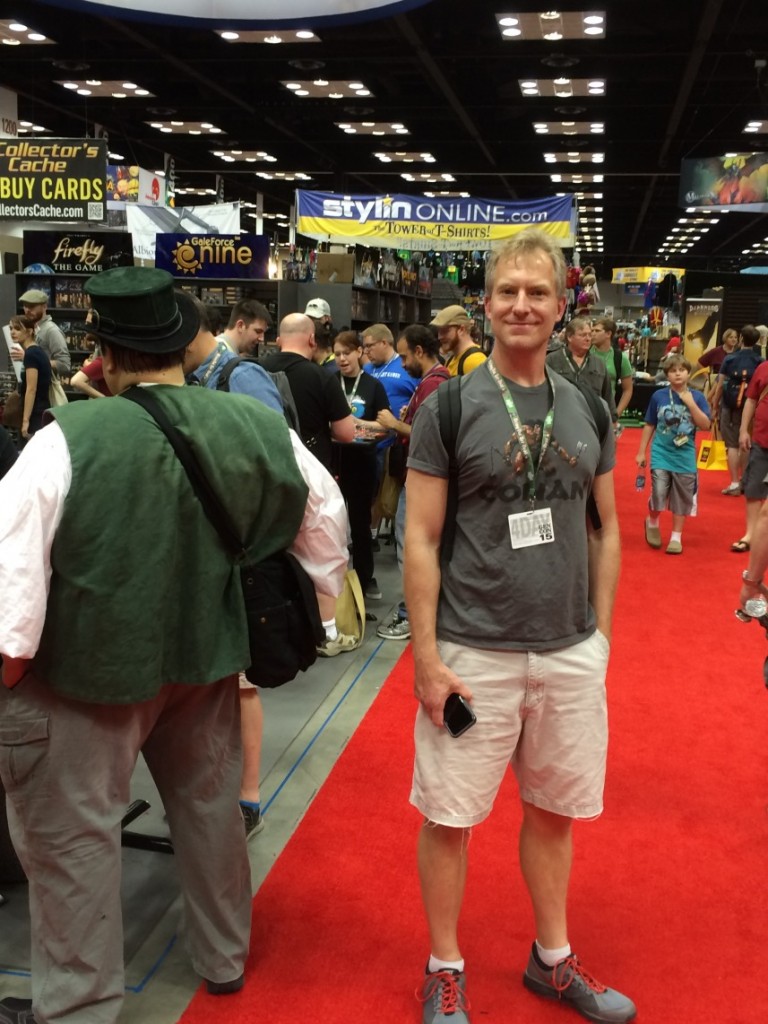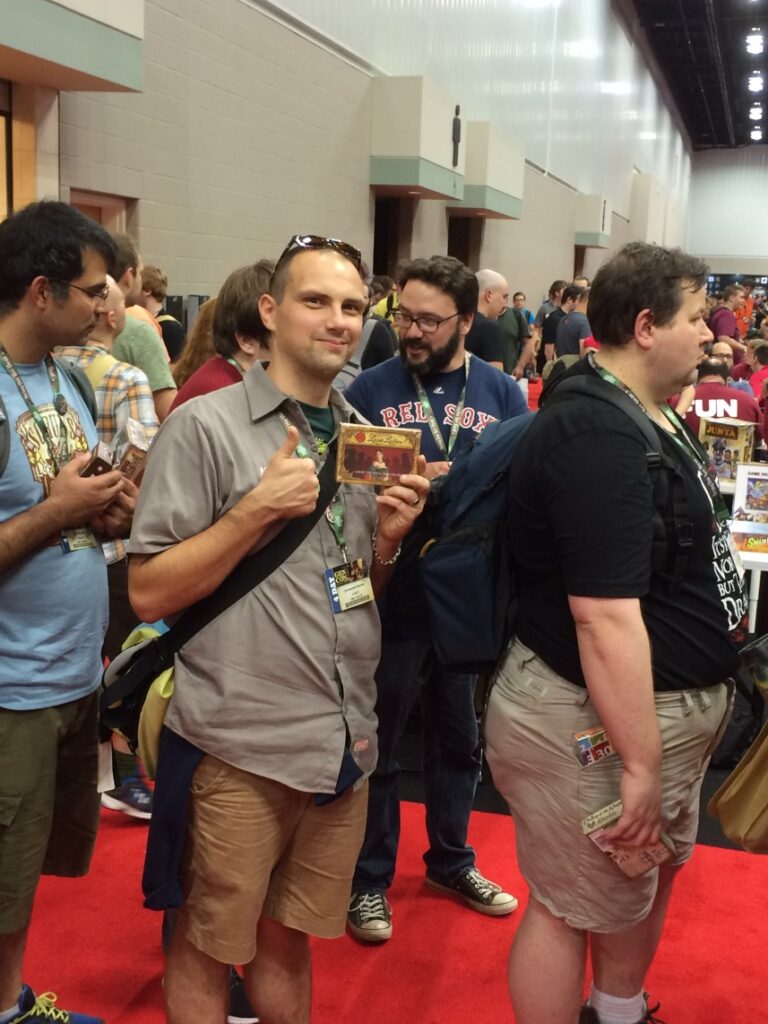Reoccurring bad guys are not essential to a good role-playing session, or even a good RPG campaign, and many times they are sight unseen as the players encounter only their catspaws. However, a frustrating and nasty villain can be the difference between a mediocre campaign and a brilliant one, so if you’re going to have a big bad villain, it’s best to know how best to create and tease your players with them so much so that they are actually sad when they manage to defeat them. I’m going to touch on a few points and then describe a specific villainous archetype I’ve used: the Concomitant.
When we were kids, the referee’s would usually have the red dragon fly away before he could be subdued, or the Death Knight would fireball a doorway to escape (which helped also because as kids, a TPK via said fireball was not an acceptable outcome most of the time). For The referee, there wasn’t much to the Death Knight or the Red Dragon in the dungeon other than stats assigned to a room number, yet for some reason the referee thought that THAT was the villain he was going to make come back and really give anal re-threads to the players. We, as those re-threaded players, grew to hate that creature by virtue of the fact that we weren’t able to kill it the first time, or that Rangdal the Blue and Celestor were both killed fighting it the first time, or our horses and camp followers were all destroyed. This villain came to life through play and discovery and not via 20 pages of backstory that only thereferee read and tried to boil down into a few sentences that no one was really paying attention to. You don’t need much to start and your players will ride along and help create something viler to them than you could have possibly imagined.
First, take the concept of evil, put it in one of your high heels and shove it up your ass. Toss out the 12 point alignment chart or draw a dot for your Mr. Villain right in the center of it and leave it there. A good villain will have goals and a world view that they fully believe are for the good of their gang, existence, humanity, the environment or puritanical customer base, these goals can only be considered evil in context of people with other codes of ethics or conflicting goals. Petty NPC’s, mere minnows, will steal for their own gain or kill and rob and rape for their momentary pleasure, as they are simply hyenas. A true fiend will have a goal in mind and will typically destroy themselves (or be willing to) in order to get there.
Think about two villains in semi-recent popular culture: Prince Arthas from Warcraft 3: The Frozen Throne and the Lich King himself. Now, I’m not up on my Warcraft Lore since 2004 or so, but the Lich King was your generic, distant ‘evil’ sorcerer, a bit of a Sauron-type with really nothing interesting about him except that he couldn’t move from his throne. Arthas is a human prince who tries to protect his kingdom from the corruption of the undead. Because he started out ‘good’ and descended into madness and ‘evil’ for the sake of saving his kingdom from corruption, he is a far more compelling villain then the actual big bad. His character arc moves from caring about the end result far more than the means and at his transformation into a servant of the Lich, he becomes largely apathetic to nearly everything. We don’t look for redemption for Arthas as the story goes forward, because what we assumed was ‘good’ about him in the beginning wasn’t good at all: it was a paladin’s horrifying fanaticism. The apathetic slave of the Lich King was far more palatable than the haughty, end-justifies-the-means prince. So what I want to concentrate on here is the Arthas and not the nearly immortal and ultimately boring Lich King. The Arthas is what your players will be in conflict with the most, and the character they will remember most after they get in said conflict.
You need a compelling villain who isn’t evil: how do you create one? Pick a goal first. Look at your campaign world or sandbox area. Look at what a typical powerful entity might want in that area. In my current campaign, the major NPC’s are all about becoming iron-fisted feudal lords. They are not particularly ruthless in all cases to get to this goal, and some have been born into it and simply expect that they will be next in line to take on that mantle. When the characters cause wrinkles in these NPC’s goals, they act accordingly: subdue, destroy or subvert, but in most cases messing with the characters has nothing to do with their actual goals (at least at first). Since the characters in many cases may share this goal (amass wealth, kill stuff, build a castle, have serfs and kill more stuff), the villain may simply be in conflict with the characters for the same goal, and are likely further ahead down the same path.
Another way to generate a goal is to look at what the characters want which can range from saving the children to amassing wealth to simply killing everything nearby that isn’t human. Take what you think are the collective goals for your characters and twist them into something absolutely awful (to the characters). As the villain’s goal is memetic to theirs, discovering this will have a very disturbing effect on the characters as they uncover the villain’s plots not dissimilar to their own. For example, Black Belt wants to defend the children from Viper’s attacks on Genricville and he hits Viper head on to defeat them. Villain also wants to save the children from Viper, but his idea is that nowhere in Genericville are they safe, so he comes up with a plot to move all the children away from their parents and guardians into a giant self-sustaining vault where they will be safe forever and he doesn’t have to be afflicted with dreams of that kid on the swing next to him that got abducted and raped in ’77 anymore. Viper just wants to intimidate the local government and rob banks and the children are just incidental casualties, the vault guy is the real bad guy.
Next it is absolutely critical to get the villain into an interaction with the players that is not combat oriented at some point. Whether it’s only watching the villain do something villain-esque, or working together to defeat a common foe before the characters discover that the villains goals run counter to their own, or the typical (and likely unworkable in many classic RPG systems) getting the characters captured and soliloquized.
Later, when combat or a chase does happen, have your villain break one of the fundamental rules of the game. In Tom McGrenery’s ‘Invincible Chi’ scenario for Feng Shui, the villain, Donny Wong, cannot be damaged by the players. They can hit him, kick him off roofs and punch him through forests destroy his clothing, but he cannot be hurt. He’s not a fantastic fighter himself, so he’s unlikely to beat down the characters as long as they don’t fight him over a long period of time—plenty long for the players to figure out there’s something else going on, and if they don’t, they take a deserved whooping. The God the Crawls has a similar set up with an entity that can take vast amounts of punishment, but doesn’t dish too much. This thing that your villain does that breaks a rule cannot be duplicated by any other entity and is not a power that can be gained by the players. In a way it is DM fiat, but really it’s just telling the players this is not just some monster scaled to their stats.
Another tactic from 13th Age to use is to not allow any characters to actually die unless they are in the presence of the villain himself. While this may be on the railroad a bit, it allows the players to have their characters build up the hatred of the villain more than if there is a constant refresh of new characters on account of character death. They also know that any interaction with the villain is for all the marbles.
Now, a villainous archetype I’ve used (and am using right now in a Runequest 6 campaign), is the Concomitant. You know those NPC’s that join up with the characters for a common goal for a short period and sort of fade into the background until there is a combat situation or their skills come into use? The DM has them running with the group but may not have planned any personality for them and they’re just some sort of crappy camp follower like a linkboy or porter. The Concomitant is my name for that NPC that shortly after working with the characters, becomes a nemesis-level villain—and the knife turns in their backs all the more because this NPC knows them.
The critical bit is that the character’s actions while working with the Concomitant on their shared goal caused the NPC to not only dislike them, but actively try to destroy them from that point on. It is best if this is not something done directly to the NPC, but to others at the hands of the characters in full view of the NPC. This is surprisingly easy to pull off, since, when alone without other, non-friendly, NPC’s nearby, players tend to have their characters do reprehensible things; always with the torture of goblins or Bürgerfriedensmiliz back at camp or in a dim basement of a threshing barn, and especially apathetically leaving helpless people to die. I cannot count how many times the players return to a scene and find the women and children of a caravan they abandoned torn apart by wolves or worse.
The best part about the Concomitant is that he or she (or it, it could even work as a horse or mule) is a sleeper plot device. You only start the Concomitant on his or her path of destruction when the players have taken actions that make sense to do so. Meanwhile, that NPC will simply tag along and add boring and meaningless bits of dialog between being used as a meatsheet in fights.
From the point that the Concomitant gets away or is left behind by the characters, they fully dedicate all of their actions to destroying the characters, stealing from them, shaming them and so on. This is not something they may be able to do overtly or directly. Even in Runequest/ low level Classic fantasy, where a single hit can mean instant death, the PC’s are typically powerful individuals not to be trifled with. Hence, the Concomitant will work around the edges as the characters pursue whatever degenerate or heroic goals they have going at the time; hounding them, ruining their allies, poisoning the townsfolk against them, destroying supplies, spreading rumors to the local Jarl, and so on. This is not the big bad, this is not the global threat to humanity, it is a direct and insidious threat to the PC’s alone, born of their own terrifying ideas and actions.
Eventually the Concomitant will be caught in the act or confronted, and that’s when the fun begins. If you feel your players are ready to have all that over with, by all means kill the Concomitant off, but if not, do have them escape a few times. Even a Concomitant left for dead can easily come back as a horrifically maimed villain later (remember how much your PC’s love the torture for information tactic and imagine what they’ll do to someone that has soured their milk so many times).
Lastly, I highly recommend the 5th Edition D&D Dungeon Master’s guide random villain generator. If you combine your ideals that flow from the random charts therein with some of the advice above, you can’t go wrong.











